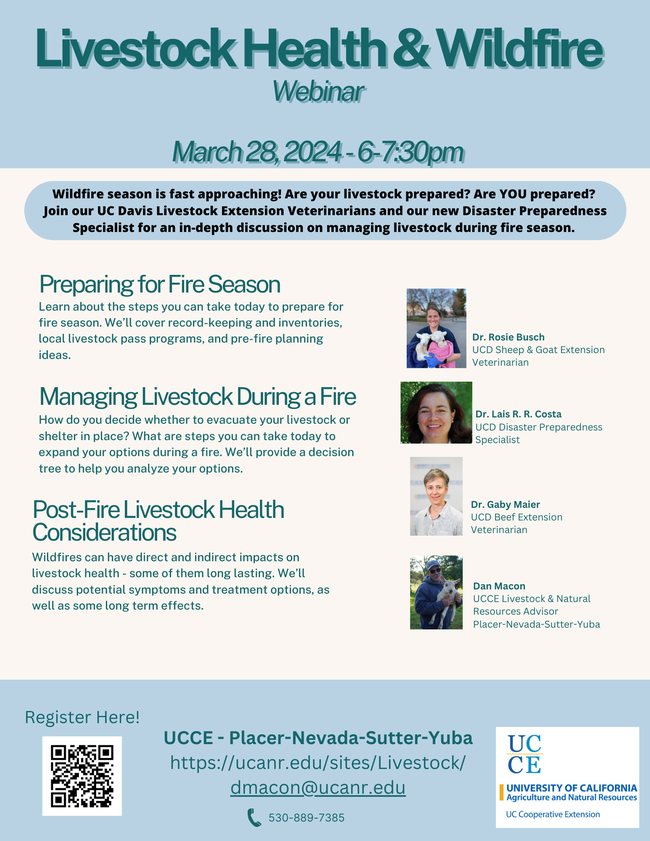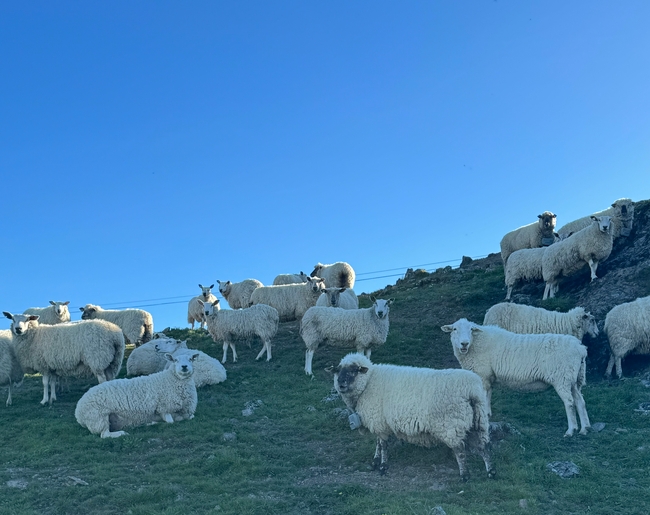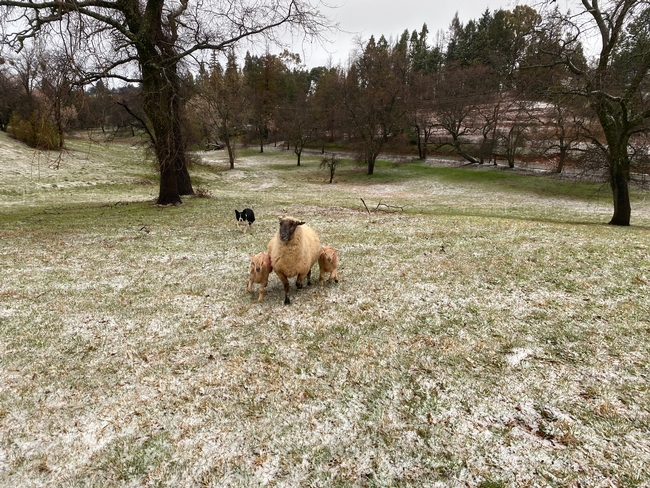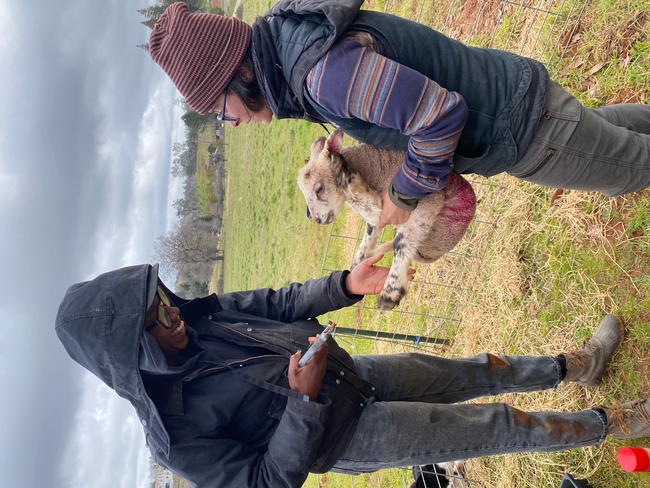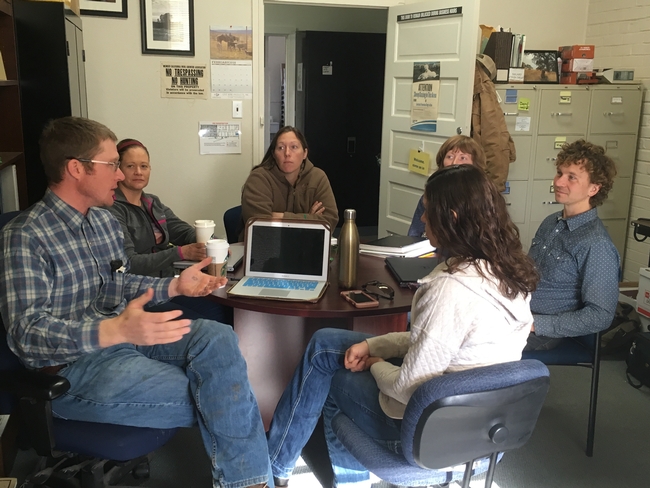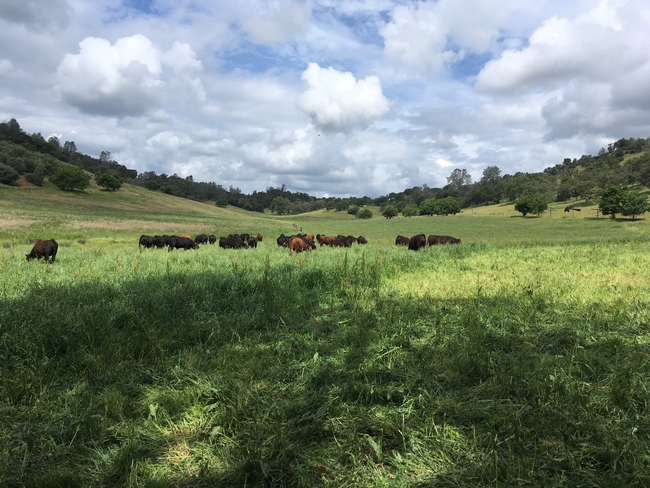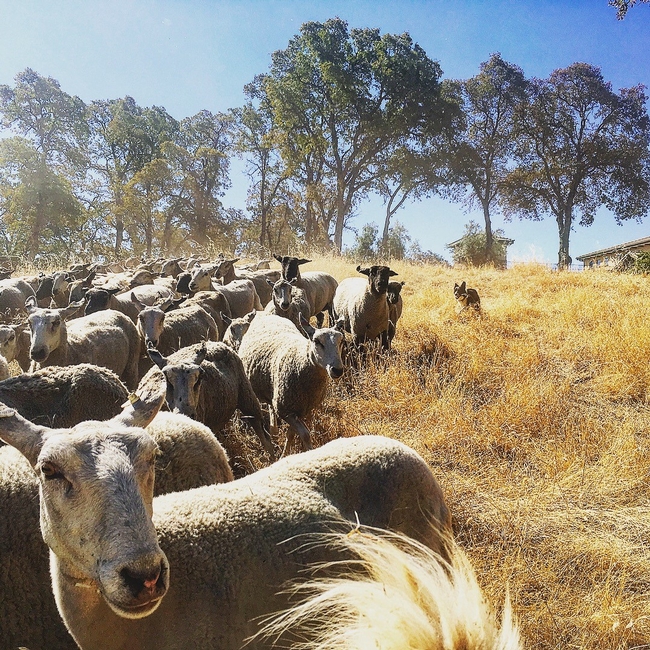- Author: Daniel K Macon
We have several outstanding workshops coming up in the next three weeks! Contact me at dmacon@ucanr.edu or (530) 889-7385 for more information!
Livestock Health & Wildfire Webinar (Thursday, March 28 - 6:00pm-7:30pm) - Virtual: Join Extension Veterinarians Dr. Gaby Maier, Dr. Rosie Busch, and Dr. Lais Costa, along with UCCE livestock advisor Dan Macon, for a webinar focusing on livestock health and wildfire. We'll discuss preparations for fire season, decision-making during a wildfire, and managing livestock health after exposure to fire and smoke. This webinar is free, but you must register to receive the webinar link. Register at https://ucanr.edu/livestockhealth&wildfire.
Ag Technology Showcase (Thursday, April 11 - 4:00pm-6pm) - Auburn, CA: Join UCCE and other farmers and ranchers to look at new agricultural technology! We'll talk about (and demonstrate) virtual fence technology, electronic identification systems, on-farm weather stations, soil moisture monitors, drones, and other technology designed to improve efficiency and reduce costs. Cost: $10/person. Register at https://surveys.ucanr.edu/survey.cfm?surveynumber=42435.
- Author: Dan Macon
Raising Livestock on Rangeland is not an Indoor Sport...
Larry McMurtry's novel, Lonesome Dove, was published the year I graduated from high school (way back in 1985 - before blogging was a word)! Four years later, the novel became one of my favorite television miniseries, featuring Robert Duvall, Tommy Lee Jones, and Danny Glover (among others). While there are a number of memorable scenes and lines (from both the book and the miniseries), one that sticks with me as a rancher is Agustus McCrae's eulogy for Danny Glover's character, Deets:
"Cheerful in all weathers. Never shirked a task."
I've been reminded of this line frequently over the last several weeks - as we've had cold rain and wind here in Auburn, and as other ranchers in California have been dealing with never-ending snow. Rangeland agriculture - grazing sheep, goats, and cattle on the vegetation that Mother Nature provides - requires us to tend to our animals regardless of the conditions we (and they) are facing. We may not always be cheerful about unrelenting snow or sweltering heat, but if we've ranched for very long, we know that we can't shirk a task when it comes to our livestock.
But working in all weathers is much easier when we're intentional about our management systems and production calendars. We lamb on pasture, so we time our lambing to coincide with what is usually the onset of rapid grass growth in late winter (we're still waiting for rapid growth this year). This system requires that our ewes have strong maternal abilities - that they can lamb mostly without our help, that they can turn our rangeland forages into enough milk for their lambs, that their lambs get up and going quickly, and that they can count at least to two. Rather than trust to luck, we've utilized an objective selection process that allows us to keep our best ewes and their daughters, while culling the ewes that don't measure up.
Our intentionality extends to our grazing management. On our winter rangelands, we have open hillsides that we graze before lambing begins, which allows us to save the more sheltered areas (with trees, brush, and topography that provide shelter from wind and rain) for lambing. We watch the weather diligently during lambing season - while sheltered paddocks are important, there's no better shelter for a lamb than a belly full of milk. If we know we have cold or wet weather coming in, we'll move the ewes to fresh feed so that they don't have to walk very far to fill their rumens with forage. And we've found a cost-effective, biodegradable plastic raincoat that helps keep the youngest lambs warm and relatively dry in really nasty weather.
Even the best management planning can't change the weather, though. Sometimes, like January-March last year, it doesn't rain at all. We adjusted by building larger paddocks in steeper terrain to give the ewes access to more forage. Sometimes we get sleet or even snow in early March; we adjust to these conditions by increasing the number of times we check the sheep (including checks every two to three hours during the night). This year, due to some extenuating family circumstances, we've purchased feed for the ewes to supplement what they are able to graze during the current stormy stretch.
And despite our best planning efforts, sometimes Mother Nature simply doesn't cooperate. I have friends who are spending 16-person-hours a day feeding the cows they can find in four feet of snow - and arranging for helicopters to drop hay to the cows they can't reach. Other friends have hauled sheep and goats to higher ground during lambing and kidding - lining up trucks and building corrals on very short notice can be extremely stressful. This diligence is more than just an economic consideration; caring for animals is a responsibility that goes well beyond dollars and cents.
Finally, I suppose that being intentional extends to our wardrobe and equipment choices as ranchers. My friend John Helle, who ranches in western Montana, says his Norwegian grandfather used to say, "There's no bad weather, only bad clothing." Someone else once told me, "don't buy cheap boots or cheap cold or wet weather gear - you'll always be sorry." As I get older, being cheerful in all weathers (or at least being less grumpy in bad weather) is directly related to my own comfort and safety. Wool clothing, Gortex(tm) rain gear, and waterproof boots are part of my winter wardrobe; my summer gear includes broad-brimmed hats and sunscreen!
Last weekend, we held our annual Pasture Lambing Workshop. With rain and sleet in the forecast, several folks canceled at the last minute - but the two young women who did show up were enthusiastic and eager to learn. We talked about the planning and preparation that goes into any successful rangeland-based production system - planning that allows us to trust our animals and trust ourselves to cope with whatever the weather throws at us!
- Author: Dan Macon
Register now for our upcoming September workshops!
Working Rangelands Wednesdays - Remote Sensing and Drought Forecast with Dr. Leslie Roche - September 7 - 6:00pm: The last in our series of Drought Solutions Webinars, this session will focus on efforts to develop forage production forecasting for annual rangelands, and will provide a look ahead at conditions this fall and winter. Register with this link! View previous sessions on our Working Rangelands Wednesdays YouTube Channel!
Crop Insurance / Pasture Range and Forage Insurance - September 13 - 6:30pm: We've invited a local crop insurance agent to walk us through the costs and coverage benefits of Specialty Crop and PRF Insurance. This workshop is FREE! Register here! This workshop will be held at the UCCE office in Auburn.
Beginning Farming Academy - September 30 - October 1: This 2-day intensive workshop provides an introduction to starting a commercial farming or ranching! We'll cover the basics of market-driven farming and ranching, provide you with economic analysis tools, and wrap up with an action plan for jump-starting your enterprise! The cost for the academy is $80 (to cover meals). Apply online.
- Author: Dan Macon
Register now for the Sierra Foothills Cattle & Sheep Grazing School!
If you look back far enough in the histories of most foothill cattle operations, you'll find... SHEEP! Believe it or not, many long-time cattle operations also had sheep at one time. And today, there's increased interest in using multi-species grazing as a risk management and diversification tool!
If you're interested in learning more about managing both sheep and cattle on rangeland or pasture, sign up for the Sierra Foothills Cattle & Sheep Grazing School, July 14-15, 2022, in Auburn, California! This two-day school will include information - and hands-on experience - in grazing planning, estimating carrying capacity, fencing systems, stockmanship and husbandry practices, cattle and sheep nutrition, and economics! Our instructors include Dan Macon (UCCE Livestock and Natural Resources Advisor), Joe Fischer (Bruin Ranch), and Ryan Mahoney (R. Emigh Livestock). Every student will have an opportunity to graze both sheep and cattle!
Tuition for the 2-day program is $200, which includes meals and course materials. Producer scholarships are available through Sierra Harvest.
For more information, contact me at dmacon@ucanr.edu or (530) 889-7385. Let's get out there and graze!
- Author: Dan Macon
October 2020 Beef Production and Targeted Grazing Webinars Now Available on YouTube!
Thank you to everyone who was able to join in one or more of our Beef Cattle and Targeted Grazing webinars during the month of October! We had great discussions on everything from managing parasites in cattle to bidding a targeted grazing job to managing pastures! I especially want to thank the Tahoe Cattlemen's Association for co-sponsoring the four cattle production sessions!
If you missed any of these webinars, or if you'd simply like to go back and review what you learned, I've loaded the videos of each session onto my YouTube channel! You can simply click the links below to watch the webinars!
An Introduction to Targeted Grazing (October 6) – learn the basics about managing targeted grazing for fuel load reduction and weed management.
Cattle Health with Dr. Gaby Maier and Dr. Becky Childers (October 15) – this webinar covers managing internal and external parasites, developing a vet-client-patient relationship, and how NOT to get fired by your veterinarian!
Beef Business Basics with Judd Tripp and JC Baser (October 20) – learn the basics of how to analyze your livestock business, and learn from the experiences of veteran Placer County ranchers.
Grazing Management Basics with Greg Lawley and Joe Fischer (October 22) – foothill ranchers discuss the art and science of managed grazing on rangeland and irrigated pasture.
The Business of Targeted Grazing with Bianca Soares (October 27) – learn about the business of targeted grazing, complete with tools for analyzing your own economic viability. The second half of this webinar features a question-and-answer session with an established targeted grazing contractor.
Beef Cattle Nutrition with Dr. Pedro Carvalho (October 29) – UC Davis/UCCE Feedlot Management Specialist Dr. Pedro Carvalho provides a basic overview of beef cattle nutrition in this final webinar.
And be sure to check out my Sheep Stuff Ewe Should Knowpodcast with fellow shepherd Ryan Mahoney – available on Spotify and Apple Podcasts! While our focus is on sheep, we cover topics of interest to most livestock producers!
If you have any questions, or ideas about future webinar or workshop topics, you can always contact me at dmacon@ucanr.edu or at (530) 889-7385.


